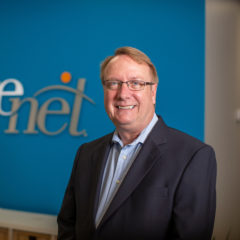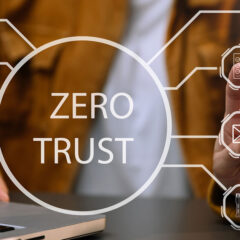Why Satellite Is the Most Reliable Means of Public Safety Communications
The Internet of Things (IoT) has the potential to transform public safety by providing government agencies, law enforcement, first responders and citizens with the data and insights to avoid, prevent and respond to dangerous events. For example, wearable sensors enable law enforcement to identify escalating situations and automatically gather data that can be used in court. Remote monitoring of patients with life-threatening conditions can generate emergency alerts when signs of a heart attack, stroke, fall or other event are apparent. IoT devices can even be used to detect unsafe air quality and respond to natural disasters.
The challenge is that the IoT often relies on cellular connectivity to collect and transmit data. When phones and Internet service go down, most people assume they’ll just use their mobile wireless network to communicate. But cellular networks rely on land-based infrastructure – cell towers, antennas, transmitters, receivers, etc. – that can be damaged during a disaster. In fact, this is the leading cause of communication failure after a disaster.
For example, health officials, first responders, and volunteers in the Bahamas struggled to communicate in the aftermath of Hurricane Dorian. Because cell towers were destroyed and communications infrastructure was overloaded, support and recovery efforts were delayed due to spotty communication.
5G is expected to revolutionize public safety by bringing enhanced mobile broadband access to areas that currently lack service. However, 5G deployments are in early stages and mostly focused on urban areas. It could take several years for 5G to mature and become widely available.
When disaster strikes, satellite technology is the most reliable means of reestablishing communications for first responders and ensuring connectivity for the IoT and other applications. Satellite networks are not vulnerable to terrestrial damage and easy to deploy for fast restoration of communications. And while cellular bandwidth is often limited, satellite systems are capable of supporting voice, data, video and image transmissions.
Satellite communications systems send and receive signals through one or more public and private communications satellites orbiting the Earth. The two most common forms of satellite communication are VSAT (very small aperture terminal) and BGAN (broadband global area network). VSAT solutions, which operate on the networks of multiple carriers, are faster and move more data. BGAN solutions, which operate on four satellites owned by Inmarsat, are more portable and easier to set up.
Rapid deployment is critical for satellite communications systems. Mobile systems, such as SageNet’s communications-on-the-move (COTM) or satcom-on-the-move (SOTM) solutions, can quickly establish connectivity. They can be set up in less than 30 minutes in vehicles, boats or aircraft and maintain connectivity while moving, which is often important when communicating in remote locations.
Fixed satellite dishes, often installed after an extreme event to provide more robust connectivity options, can also be highly portable. SageNet’s ION instant communications solution is a self-contained ruggedized field kit that enables rapid deployment of fixed satellite service. It can be easily carried by one or two people or integrated into a mobile command vehicle.
Don’t make the mistake of assuming cellular networks will always be available after a disaster to support the IoT and public safety communications. Let us show you how SageNet’s satellite communications solutions provide the reliable connectivity and portability required to get people the help and services they need.

Scott Hutchinson
Director of Satellite ServicesCompanies are using VSAT technology in all kinds of ways. That’s the exciting part of our focus right now – finding new markets and opportunities where satellite can be a benefit.
Get to know Scott



